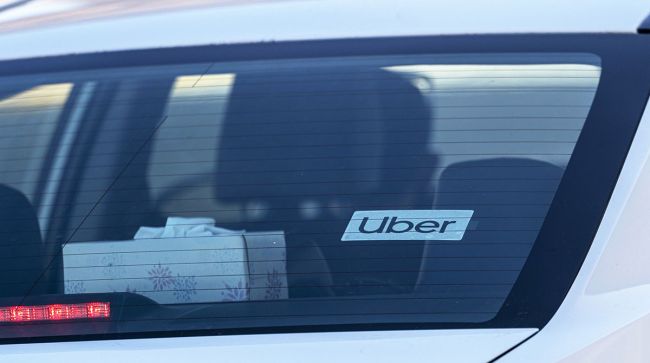SAN FRANCISCO — Uber raised the minimum age requirement for most of its new drivers in California to 25 on Aug. 24 under rules the company said are necessary because of the rising costs of commercial auto insurance in the state.
The new rule applies only to drivers signing up to transport passengers with Uber’s ride-hailing platform, and not for those delivering food with Uber Eats. Previously drivers as young as 19 could sign up.
Those under 25 who activated their accounts prior to Aug. 23 can continue to drive for Uber, the company said.
Insurance rates for Uber’s California drivers are significantly higher than for personal vehicles or taxi drivers, according to a company statement announcing the change.

The rule does not apply to Uber Eats deliveries. (Kiyoshi Ota/Bloomberg News)
“As a result of these lopsided requirements, personal injury attorneys have created a cottage industry specializing in suing ride-share platforms like ours, pushing Uber’s California state-mandated commercial insurance costs to rise by more than 65% in just two years,” the company said. “By increasing the age requirement for new drivers to 25, we hope to mitigate the growth of those costs.”
All 50 states require commercial insurance for drivers to earn money with a ride-hailing service. Uber maintains commercial auto insurance for drivers — including at least $1 million of liability coverage once a ride is accepted. Personal auto insurance typically doesn’t cover activity on ride-hailing apps.
The minimum age is already 25 for those driving for Lyft, Uber’s main competitor.
Starting Aug. 24, drivers under 25 trying to sign up with Uber will receive an email explaining the new policy and providing a link to more information.
The new restriction coincides with a resurgence in passengers following a deep downturn due to the pandemic.
Uber is now handling more rides than it did in 2019, raising the company’s hopes that it may finally realize its long-term of goal of becoming consistently profitable.
Realizing that objective has sharpened management’s focus on cost control, a factor that may have contributed to the decision to drop 25-and-under drivers.
Uber’s food delivery service, which will continue to let that demographic work as drivers, accounts for one-third of the company’s revenue.
Uber hopes to work with state lawmakers and industry experts “to discuss legislative and regulatory changes that will improve the experience for all California drivers,” according to its statement.






